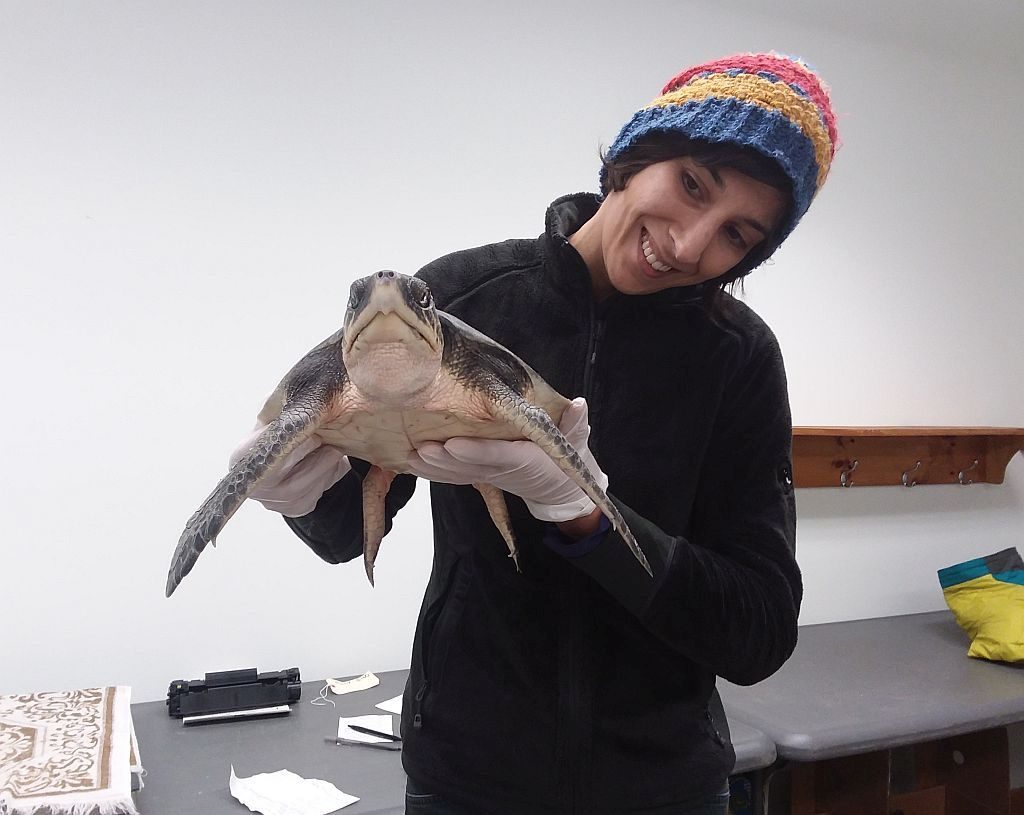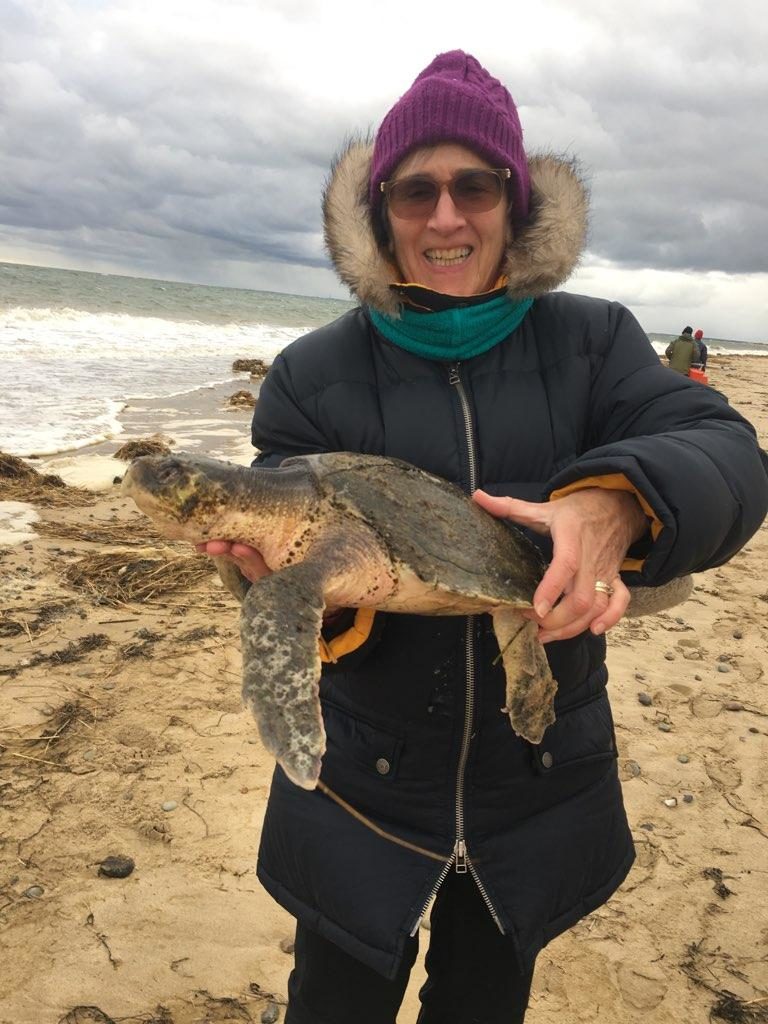Wellfleet Bay has been rescuing sea turtles for more than 30 years and almost every season has its memorable moments.

Unfortunately, the 2018 cold-stun season will likely be remembered in large part for the Thanksgiving Day week-end deep freeze that killed scores of turtles, most of which would have been successfully rescued under normal conditions.

A very few lucky turtles managed to make it through that ice box weekend, including this Kemp’s ridley who turned out to be a repeat customer. After stranding here last year and being successfully released in August, this young turtle managed to find its way back into Cape Cod Bay where it got trapped again!

2018 was also our second busiest cold-stun season ever—with 800 turtles recovered, a little more than half of them alive.

We’ll also remember the year for giving us the biggest loggerhead we ever rescued—a nearly 300 pound female pulled from Great Island in Wellfleet. Lucky for her (and us) she stranded the day before the Thanksgiving cold front arrived.

Our work doesn’t stop when sea turtles no longer come ashore.
Soon, our Saturdays will be spent at the Woods Hole Oceanographic Institution for necropsies of the turtles that didn’t survive their ordeals. These sessions increasingly are attended by government, academic, and other scientists working to fill in the many gaps in what is known about sea turtle biology and life history. Each year, our necropsies collect more and more samples for research aimed at shedding light on where young sea turtles are traveling, foraging, what they’re eating, and at what stage of their lives.

Losing a lot of turtles to an early season cold snap was the toughest part of the fall. But it certainly helps to know that at least several hundred of these critically endangered sea turtles survived and that the rescue program is supporting conservation research as well as unique field opportunities for students.



